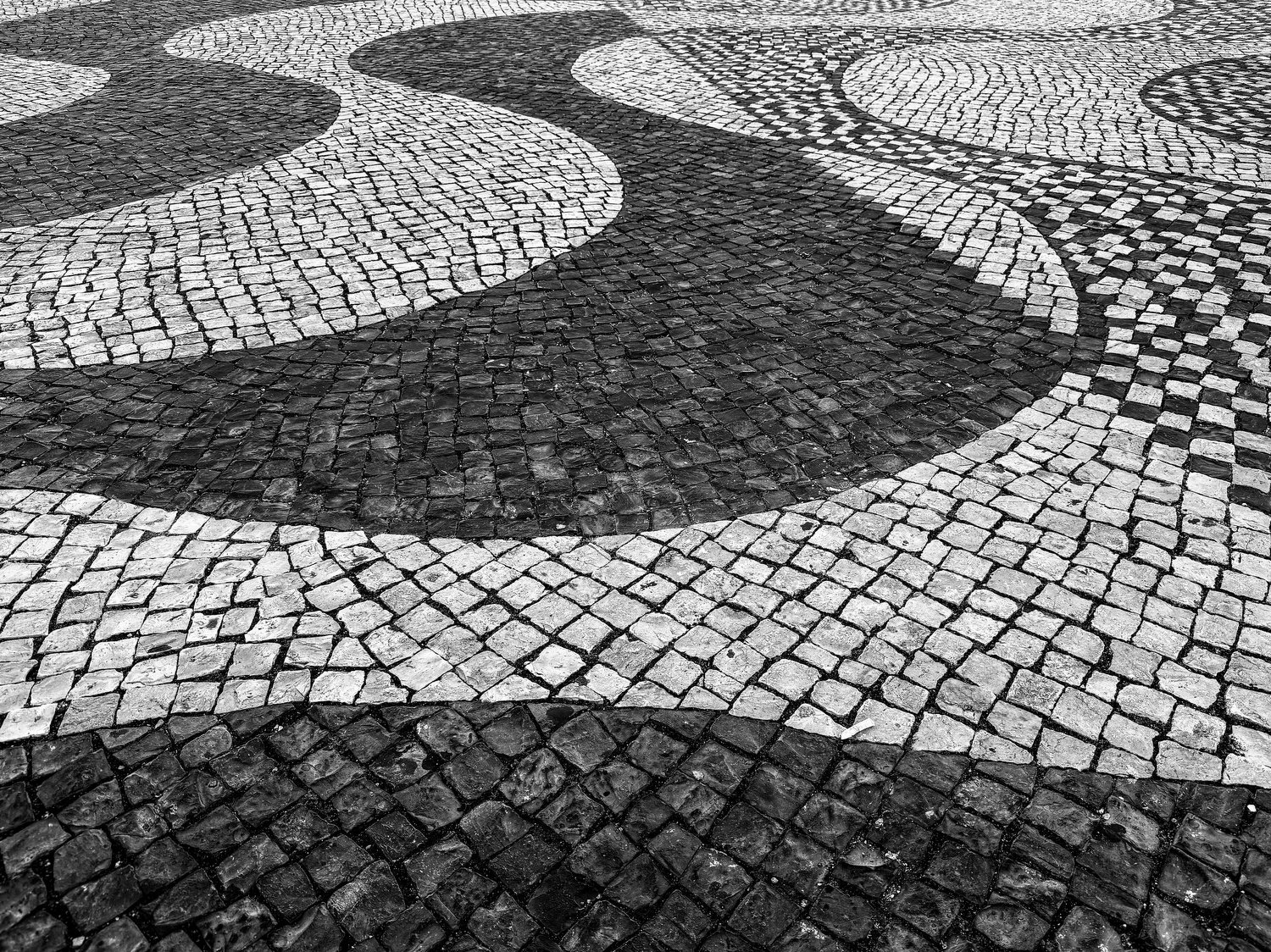The Art of Portugal’s Stone Pavement
One thing you’ll notice right away when arriving in Lisbon - the charming cobblestone pavements that accentuate the city.
Actually these decorative sidewalks can be seen all over Portugal, but they originated in Lisbon and so the city takes a particular pride in them. They give the streets a unique and artistic touch.
What is calçada portuguesa?
Known as “calçada portuguesa”, the typical Portuguese pavements sport geometric patterns and traditional motifs in white and black stones, usually limestone. A gray color is also used but less common. In some areas, a rare pink or yellow stone may be used.
Whatever the color scheme, all you have to do is look down to enjoy this display of Portuguese culture and craftsmanship!























We had a great time seeking these pavements out and photographing them. Many of the motifs reflect maritime themes - from ships to mermaids to playful fish and sea creatures. Some of the most interesting patterns are intricate repeats of waves or circles that bring to mind the ripples in water after a stone is dropped in.
The photos in the above slideshow were taken in a number of places: Lisbon, Belém, Porto, Aveiro (lots of the sea creature designs come from this charming canal town) - there was even a stonework design on the floor at the Lisbon train station!
Skilled craftsmen keep the stonework looking its best - we saw a number of areas where sections of the pavements were being repaired.
The stones can be cut by a machine or by hand with a hammer and chisel. A mold is set down with the desired pattern, then the first stones are placed around the mold. Once the pattern is established, the mold is removed and the color pattern filled in. The results are precise and amazing!
Just beware - the smooth surfaces of the cobblestones can get slick in the rain!
A brief history of calçada portuguesa
In researching the history of the distinctive Portuguese sidewalks, there seems to be a story out there about a rhinoceros being responsible for the limestone sidewalks. The legend goes that the then King of Portugal, D. Manuel I, was having a birthday parade on the streets of Lisbon, where a rhino from India would be presented to him. As it was winter, it would likely rain, so the king decided to pave the street so the animal wouldn’t kick up mud and get him dirty.
Well, I don’t know about that!
Rhino or no, it seems that this type of stonework was brought to Portugal by the Romans around 1500. But it was not until the 19th century that the particular style of calçada portuguesa became a thing. Also, Muslim aesthetic influence also brought geometric motifs and symbolism into the design palette.
Our favorite travel resources
Hotels - Booking.com. Lots of search options and information. Link
Activities - Viator. We love food tours and historical guides from Viator. Link
Airfare - FareDrop. Custom notifications of airfare sales. Link
Phone connection - Airalo. E-Sim for your phone, it’s easy and available for every country. Link
Note - This blog post contains affiliate links. This means that if we recommend a product, activity, or hotel, we might receive a small commission if you buy or book from these links. This is done at no additional cost to you. We only recommend products we have personally used or have thoroughly researched.
The history of the modern look of the paving seems to go back to the mid-1800’s when the São Jorge Castle in Lisbon was an active military base.
In 1842, Lieutenant General Eusébio Cândido Cordeiro Pinheiro Furtado ordered the parade ground to be paved with a zigzag design of black and white stones. This job fell to prisoners of the fort, making them the first calceteiros, although not by choice!
This original pavement unfortunately no longer exists, but the people of Lisbon very much approved of it.
Soon afterward, the central square of the city, Rossio (also known as King Pedro IV Square), was covered in a limestone pattern of waves. This large area of pavement is now one of the best known examples of calçada portuguesa in Portugal.
Soon this technique spread to many other Lisbon squares and sidewalks., Eventually, it spread to Porto, Guimarães, Faro and Ponta Delgada, and to Portuguese colonies and even to other countries.
Well, we are glad the style established itself so well - because the look of these sidewalks is so classy, light and beautiful, and quintessentially Portuguese. And fun for photographers!
This post was researched and written by Debbie of the Empty Nest Explorers. You can learn more about the Empty Nest Explorers here
















The small village of Óbidos is a popular stop for visitors to Portugal, due to its authentic medieval charm and easy access from Lisbon. It’s good for a solid couple hours visit, especially if combined with other stops in the area.
What we enjoyed most in Óbidos was walking along the fortified walls to take in the views, exploring the quaint cobblestoned Rua Direita, and indulging in some delicious Ginja de Obidos, the traditional cherry liquor of the region served in a little chocolate cup.